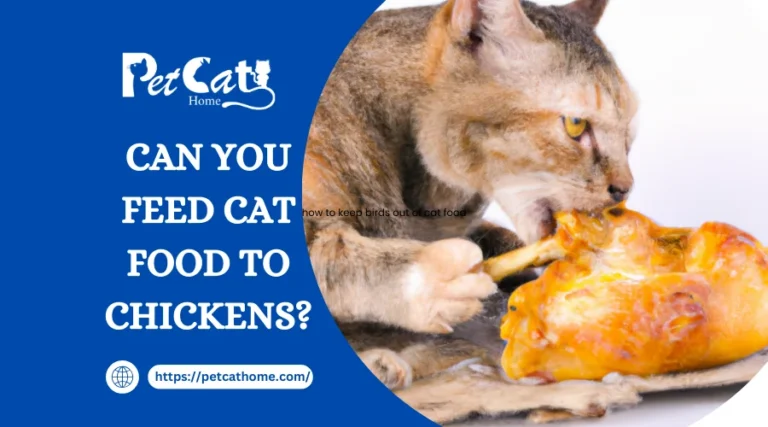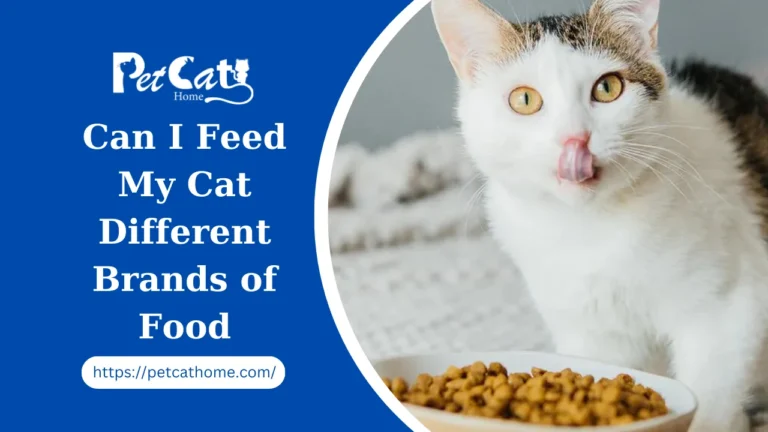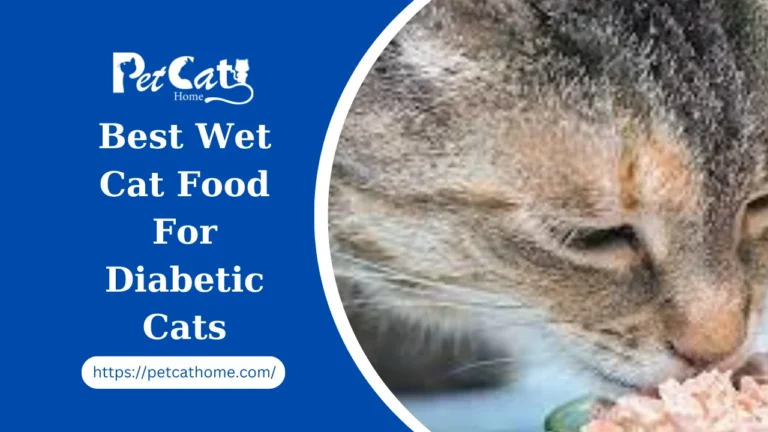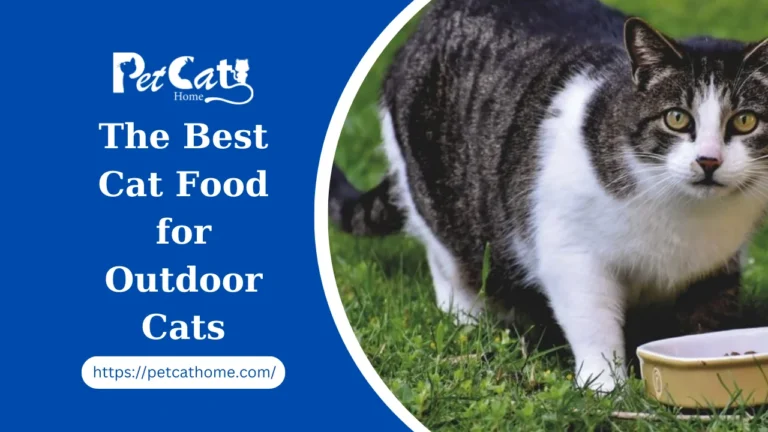Best Cat Food For Hairball

Welcome to our in-depth guide to selecting the finest cat food to reduce hairballs. As conscientious pet parents, we recognize the difficulties involved in preserving the well-being and health of our feline friends. Cat food frequently experiences hairballs, and giving them an adequate diet is essential to manage this disease properly.
What Causes Hairballs in Cats?
Let’s take a quick look at the reasons for these bothersome hairballs before getting into the topic of cat meals for hairball control. Cats are careful groomers; sometimes they swallow loose hair they ingest during their grooming sessions. If left untreated, this hair can accumulate in the gut and form hairballs, which can cause discomfort, diarrhea, and other digestive problems.
The Role of Diet in Hairball Prevention
Selecting the proper cat food is essential to preventing the creation of hairballs. A high-fiber diet lowers the risk of hairballs by promoting healthy digestion and making it easier for hair to pass through the digestive tract. Furthermore, properly hydrated is essential since it helps the body’s natural processes for passing hair through the urine and feces.
Selecting the Best Cat Food for Hairball Control
1. High-Fiber Formulas
Choose cat food recipes that are made especially to help with hairballs. Choose products labeled “hairball reduction” or “digestive wellness,” as these are frequently created with more fiber to help hair travel through the gut.
2. Protein-Rich Ingredients
Ensure that premium protein sources, such as chicken, turkey, or fish, are included in your cat food. Cat food needs protein as the main source of nutrition since it is necessary for preserving their muscular mass and general health.
3. Limited Ingredient Formulas
Limited ingredient formulas with fewer potential allergens are a good option for cats with stomach discomfort or cat food sensitivities. These recipes usually contain only one source of amino acids and a small number of extra ingredients, making them simpler for digestion and less likely to cause negative side effects.
4. Wet Food Options
Adding wet cat food to your cat’s diet can help them stay more hydrated, which will help avoid hairballs. Because wet food is more moisturized than dry kibble, it helps your cat stay hydrated and supports a healthy digestive system.
5. Natural Remedies and Supplements
Adding natural treatments or hairball-controlling supplements to your cat’s food will help further with hairball management. Hair passage can be made easier using products like psyllium husk, omega-3 fatty acids, and digestive enzymes, which lubricate the digestive tract.
The 6 Best Cat Foods For Hairball Control
Although hairballs, sometimes called trichobezoars (pronounced trike-oh-bee-zohrs), are considered a typical cat peculiarity, they reveal more about your cat’s digestive health than you may think.
When your cat ingests more hair than usual after grooming, it may indicate an underlying skin issue, allergy, or poor cat food. Chronic hairballs might occur more frequently than just twice a month. This article will explain the connection between hairballs and diet and which foods may help minimize your cat’s hairball problems.

Are Hairballs Normal, and What Do They Have To Do With Diet?
Until Ingrid Martin Luther King Jr., a veterinary writer and the founder of ConsciousCat.net, noticed the differences in her cats’ raw and vet-recommended kibble, she assumed that hairballs were common.
Despite receiving frequent doses of a derived from petroleum hairball therapy, her first animal, Feebee, ate dry cat food chow as prescribed by the veterinarian and had hairballs about times a week. Following her education in feline nutrition, King fed her two cats, Buckley and Amber, a grain-free canned cat food. Yakking up an itch became uncommon after the switch.
And Allegra and Ruby, Ingrid’s present-day cats? Raised on a raw diet, the two torties had never thrown a hairball when Ingrid wrote about them in 2012.
This tale may sometimes be a series of unrelated events, but it may also provide insight into the relationship between hairballs and intestinal health.
Normally, hairballs exit your cat’s food body through its feces after passing through the intestines. If this migration is disrupted or delayed, a trichobezoar may arise if the hairs in the stomach fuse with the fat. This usually sets off retching, which pushes the bulk up and out of your cat’s mouth and via the esophagus.
Any time a hairball “comes up” in this way, there’s a problem with the digestive system. The following unexpected claim is made by Gary D. Norsworthy, DVM, in an article that appears in Veterinary Practice News:
In summary, there’s no need to worry if a hairball occurs once a month or fewer. Any greater frequency implies that there is a problem.
Top 6 Best Cat Foods For Hairballs Reviewed
This fresh cat meal from Smalls is our top recommendation for cats who have trouble with hairballs because it is largely made with animal proteins that are suited for the species and have very few carbohydrates. Additionally, it’s a dish with just one protein, so cat food with dietary allergies might find it suitable. Smalls also has recipes using turkey, beef, or seafood, in case your cat is intolerant to chicken.
Most of this recipe’s 48% protein count (measured via dry matter) comes from chicken liver and muscle meat. Omega-3 fatty acids from animal sources, such as cod liver oil, have anti-inflammatory and beneficial effects for skin and coat health.
All things considered, this dish gives cats of all ages nutrition suitable for carnivores. It is hydrating due to its high moisture content and is readily absorbed by most felines. For cat food who would rather eat pate than minced food, Smalls Smooth Bird might be a better option.
The runner-up is the sans grains canned cat food Exotic Kitty Koolina Luau Chicken without Cream in Chicken Consomme.
A few things about this simple recipe by Tiki Cat may benefit your cat food prone to hairballs.
Should digestive problems be the source of your cat’s hairballs, you may find this recipe’s ease of preparation and digestion to be rather helpful. This recipe is all about the meat, unlike some that focus on low-value plant protein. A species-appropriate means of protein and nutrients, chicken takes center stage and dwarfs the other inclusions.
Of course, food that contains chicken is always subject to warnings. It is not a good option for cats who have a verified allergy to chicken, and it is not a good choice for cats with suspected food allergies. One of the most prevalent food allergies in cat food is chicken, which is found in many cat foods.
Given that it contains dried eggs, this dish is a
source of the nutrients lecithin and choline that aid in preventing hairballs.
The use of sunflower seed oil rather than lipids derived from animals is a drawback. Cats can optimally metabolize lipids derived from animals, such as fish oil and chicken fat.

Value Pick:
Selecting meals with a high reputation for cats with GI issues is smart, as recurring hairballs might indicate digestive problems. This Nulo turkey and chicken pate enjoys that reputation.
The main ingredients are tuna, fish, turkey, and chicken meat. The variety of protein sources in this food may present a challenge for cats with dietary allergies or sensitivities. However, this meal performs well in taste testing and appears to calm the digestive tract for cats with no food allergies or sensitivities.
The meal includes pumpkin, frequently suggested as a remedy for hairballs and small amounts of other plant-based substances.
Best Canned Cat Food:
With its construction based on what the manufacturer calls a Palaeolithic feeding model, this meal is especially well-liked by cats suffering from intestinal inflammation and other digestive problems.
This is a one-source meal with few ingredients that contain animal protein. Turkey is a wonderful substitute for chicken and isn’t one of the highest allergies for cats.
The recipe, which calls for turkey animal products, organs, broth, stabilizers, and additives, is among the easiest to find. It does not contain fruits or veggies, which translates to easy digestion and hopefully fewer hairballs for an obligatory carnivore.
Some reviews claim that the pâté has an odd, solid quality and that their cats didn’t enjoy eating it, although few contest the food’s nutritional value.
Best Freeze-Dried:
Since freeze-drying eliminates harmful organisms without changing fresh, raw beef’s nutritional value or texture, cats will find Stella and Chewy’s recipe extremely digestible.
The majority of the morsels are made up of rabbit meat and bones. Rabbit is not one of the main allergens and is not expected to cause any allergy problems because most cats don’t consume it regularly.
Pumpkin seeds and olive oil are used in this dish. Though pumpkin seeds are high in fiber and may help your cat’s body eliminate hair, these plant-based components aren’t the best for an obligatory carnivore.
Probiotics found in the diet can help with intestinal health in general. The bacteria may be killed during handling, processing, and storage. Thus, it’s uncertain if they will survive when they reach your cat’s feeding bowl.
Best Multi-Protein:
The main ingredients of these thawed nuggets are the organs and muscle meat of the turkey. For cats with a confirmed or suspected food allergy, turkey is a decent substitute for chicken because it isn’t one of their top allergens.
This recipe will provide your cat with plenty of nutrition and great digestibility, as 96% of its protein comes from animal sources. But it’s not just meat that’s served. It also contains traces of different fruits and vegetables, organic pumpkin and sunflower seeds, kale, squash, celery, blueberries, and cranberries.
Instead of using artificial vitamins and minerals, the food is nutritionally balanced thanks to these low-carb plant ingredients.
What To Consider When Buying Cat Food for Hairballs
Feeding a cat with persistent hairballs is comparable to feeding a cat with other indications of GI inflammation because it is known that hairballs might be a sign of digestive issues. The diet you feed your cat should be in line with their physiology. To help your carnivorous cat get hairballs through the digestive tract, try feeding it a higher-fiber diet, but otherwise, feed it mostly meat and as few plant-based elements as possible.
Hypoallergenic Foods Might Help
A cat may exhibit excessive hairballs as a sign of dietary allergies. Hairballs can result from food allergies, leading to itchy skin because itching cats tend to overgroom, which causes them to swallow more hair. Consult your veterinarian about transitioning to a hypoallergenic or limited-ingredient diet devoid of possibly allergic components.
Added Fiber Might Help
The majority of foods marketed to reduce hairballs are high-fiber items. Fiber additives facilitate food and hair passage through the GI system.
Cats require less indigestible matter from plants than they typically get from commercial cat food, which often contains additives like yeast from brewing, wheat middlings, and dried beetroot pulp. First, give your cat a diet that is best for good digestion. Should the hairballs continue, you may want to consider a higher-fiber diet.
Before treating your cat for a hairball or altering their diet, take them to the vet. Your veterinarian will evaluate the general health of your cat and ascertain the extent of the hairball issue. They will advise your cat’s best course of action for treating hairballs.
Helpful Tips for Minimizing Hairballs
1. Groom Your Cat Regularly
Cats eat hair when they groom themselves, therefore brushing your cat’s fur off is one of the greatest ways to avoid hairballs. The hair will go right into the trash rather than your cat’s GI tract, which will conge into a ball.
2. Maintain a Healthy Coat To Prevent Excessive Shedding
A good-health cat sheds less than one that is not as well. Here are some tips for maintaining the health and strength of your cat’s coat:
Determine which food elements are causing reactions or sensitivities and eliminate them.
Offer a supplement containing omega-3 fatty acids. Salmon, krill, and other fish are examples of species-appropriate suppliers of omega-3 fatty acids. Steer clear of flaxseed oil along with other plant-based fatty acid sources.
Provide a healthy diet high in protein from animals.
Eliminate any medical issues that might be causing the excessive shedding.
Pumpkin
Pumpkin is a source of fiber that aids in the movement of hair throughout the body. For cats prone to hairballs, pureed pumpkin in a can is the most widely used fiber supplement; however, some cats also utilize coconut fiber or psyllium husk powder.
Hairball-Specific Lubricants
These lubricants help the hair in the digestive tract move through the system by coating it. Mineral oil, petroleum jelly of medicinal grade, or a combination of the two are typically used to make them.
Slippery Elm
The gastrointestinal (GI) tract’s inner surfaces are lubricated by this supplement, which facilitates hairballs sliding in the proper direction.
Egg Yolks or Egg Yolk Lecithin Supplements
Two micronutrients, choline, and lecithin, found in egg yolks, may help reduce hairball issues. Food and hair are propelled down and out of the GI system by muscle contractions called peristalsis, aided by the choline component acetylcholine. The lipid that holds hairballs together is emulsified by lecithin.
You can provide your cat with these nutrients by supplementing with egg yolk lecithin or adding the yolks of eggs to their food. Remember to use egg yolk lecithin instead of soy or sunflower lecithin from other sources.
FAQs
What do cats’ hairballs mean?
hairball is an accumulation of fur that cats swallow while self-grooming. These indigestible hairballs have the potential to induce nausea or vomiting during their transit through the digestive tract.
Are cats at risk from hairballs?
Hairballs themselves usually pose little threat, but if they become too big or impenetrable, they may occasionally result in intestinal blockages. You must keep an eye on your cat’s behavior and seek veterinary advice if you see any indications of suffering.
How can I keep my cat from getting hairballs?
A balanced diet high in fiber to aid digestion, frequent brushing to get rid of loose fur, and ensuring your cat has access to lots of clean drinking water to stay hydrated will all help avoid hairballs in cats.
What qualities should I search for in a cat’s diet to prevent hairballs?
Seek for cat food that has been specially prepared to deal with hairball problems. These meals may also have components that support overall digestive health. They frequently have a greater fiber content to aid hair passage through the intestines.
Can I provide supplements or cures for hairballs in my cat?
Vitamins and treatments for hairballs are available to help lubricate the gastrointestinal tract and make hair flow more easily. Nonetheless, before administering new drugs or supplements to your cat, you must speak with your veterinarian.
Conclusion
Promoting your feline friend’s general health and well-being requires careful consideration when choosing the most effective feline food for hairball control. By selecting premium formulas that are high in fiber, protein, and moisture, you can successfully manage hairball problems and ensure your cat has an enjoyable existence.
Before making any big dietary changes for your cat, particularly if they have already present medical concerns or dietary restrictions, always remember to speak with your veterinarian.
